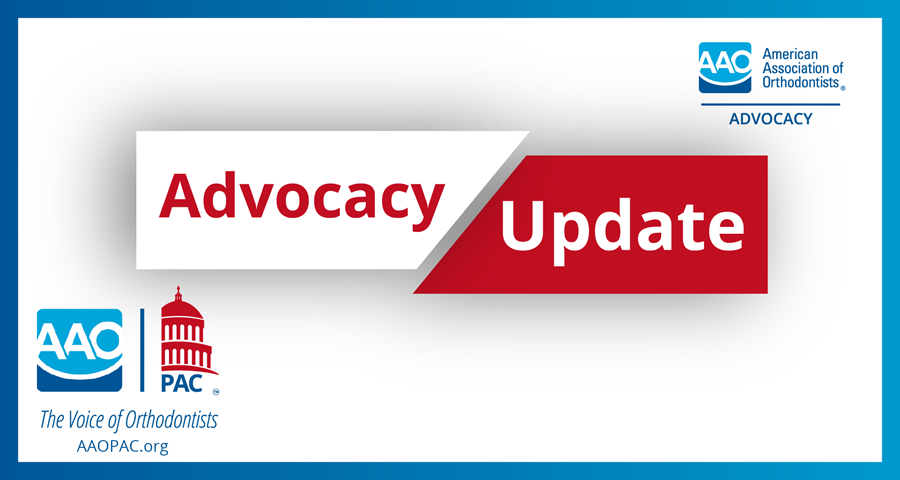The Affordable Care Act (ACA) brought the issue of qualifying orthodontic cases as being medically necessary to the forefront of orthodontic concerns. Based on calls that came into the AAO, it soon became clear that members throughout the United States were confused regarding how to get these cases approved to treat.
To help members navigate embedded orthodontic benefits within insurance policies offered via the Marketplace/Exchanges, the AAO has led an effort to develop qualifying criteria to be evaluated, established and standardized throughout the United States. All major dental payers have been represented during meetings led by the AAO Committee on Medically Necessary Orthodontic Care, and have expressed interest in forming a coalition to advocate for standardization of MNOC criteria.
A primary complication is that instead of developing and implementing a single definition of “medical necessity” and how to qualify cases to meet the established criteria, the government left it up to the respective states to define medical necessity..
Claims System to be Developed, Standardized Nationally
Representatives from the National Association of Dental Plans (NADP) indicate that MNOC cases can likely be adjudicated with appropriate coding and via claims systems programmed to recognize algorithmic logic programming. The group proposed development of a pilot program to test proposed standardization criteria.
Cases will be re-adjudicated applying the AAO’s proposed auto-qualifying criteria, listed below, to determine the efficacy of the qualifiers as well as the number of cases that will fall into the category deemed “medically necessary.” The AAO’s objective is to qualify approximately 10 percent of all cases treated as medically necessary.
Proposed Auto-qualifiers: *
- Overjet equal to or greater than 9mm
- Reverse overjet equal to or greater than 3.5mm
- Posterior crossbite with no functional occlusal contact
- Lateral or anterior open bite equal to or greater than 4mm
- Impinging overbite with either palatal trauma or mandibular anterior gingival trauma
- One or more impacted teeth with eruption that is impeded (excluding third molars)
- Defects of cleft lip and palate or other craniofacial anomalies or trauma
- Congenitally missing teeth (extensive hypodontia) of at least one tooth per quadrant
Dr. Lyn Mouden, representative from the Centers from Medicare and Medicaid Services (CMS) said that, upon identification of the recommended criteria, CMS would present the suggested guidelines to all state Medicaid directors for consideration and potential implementation.
AAO representatives plan to meet further with payers during the mid-May meeting of the American Association of Dental Consultants (AADC). The meeting will provide further opportunity to work collaboratively with payers from the NADP to provide access to test cases for the retrospective study.
Why Can’t an Index System Be Used?
About half of the states opted to use the same qualifying criteria for determining medically necessary orthodontic care (MNOC) as they use to qualify Medicaid cases – including use of the Salzmann or HLD indices. The remaining half of the states left the decision of how to qualify MNOC cases up to individual payers within those states. The AAO established a Handicapping Indices Task Force to explore the possibility of identifying an index that might streamline and standardize the qualifying process.
After collecting data, the Handicapping Indices Task Force determined that an index would not be in the best interest of orthodontists or payers. Payers usually do not favor indices because it is hard for them to quantify the information and make it useful in their claims adjudication systems. Indices generally necessitate review of claims by a consultant.
The Handicapping Indices Task Force concluded its efforts and the Committee on Medically Necessary Orthodontic Care was formed. The committee included representation by the AAO Coding Consultant and the councils on Orthodontic Health Care, Scientific Affairs and Education, thus bringing a variety of perspectives to the process of determining the best approach to identifying MNOC criteria.
Developing Criteria Based on Scientific Evidence
With observations provided by dental payers in mind, the Committee on Medically Necessary Orthodontic Care compiled existing qualifying criteria from a number of states. The committee then formulated a refined list of proposed criteria (see above) that is corroborated with scientific evidence, and which could be used to automatically qualify a case as being medically necessary.
A Coding System for Medically Necessary Criteria
Following AAO Board approval, the Committee on Medically Necessary Orthodontic Care worked to develop appropriate coding to be used in conjunction with the other qualifying criteria. Drs. Carla Evans and Rod Dubois of the AAO Electronic Health Records/SCDI committee have been working with the committee to establish appropriate coding to be used.
Dr. Greg Oppenhuizen has been working with the Angle Society, of which he is a member, to conduct a retrospective study reviewing orthodontic cases in which patients held marketplace policies and whose claims have already been adjudicated by payers.
* Proposed Diagnostic Records Requirement:
- Panoramic radiograph
- Cephalometric radiograph(s)
- Intraoral and extraoral photographs
And further, the Committee on Medically Necessary Orthodontic Care recommends that:
- Orthodontic cases deemed to be medically necessary are considered to represent a greater level of severity and therefore should only be treated by a properly trained and credentialed orthodontist. If a multi-disciplinary approach is needed, other medical/dental specialists would be required.
- Medically necessary orthodontic care (MNOC) cases represent a greater level of severity and therefore should be reimbursed at a higher level more commensurate with medical reimbursement rate percentages.



